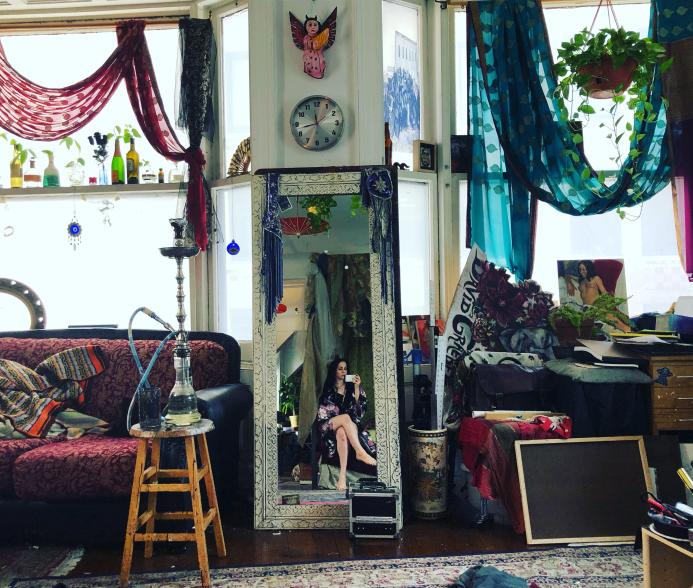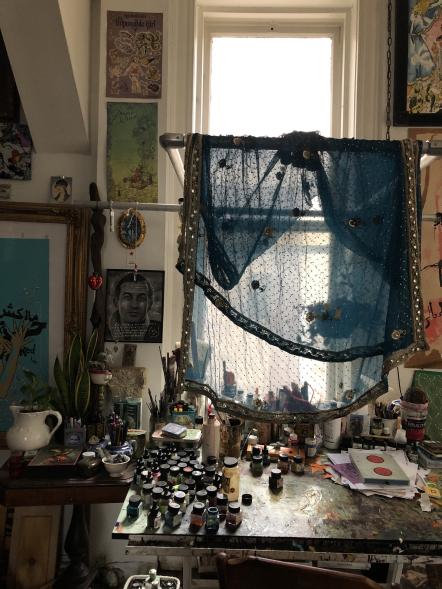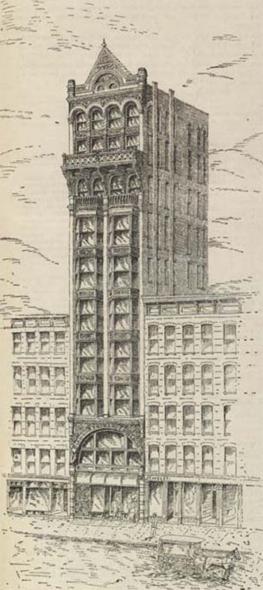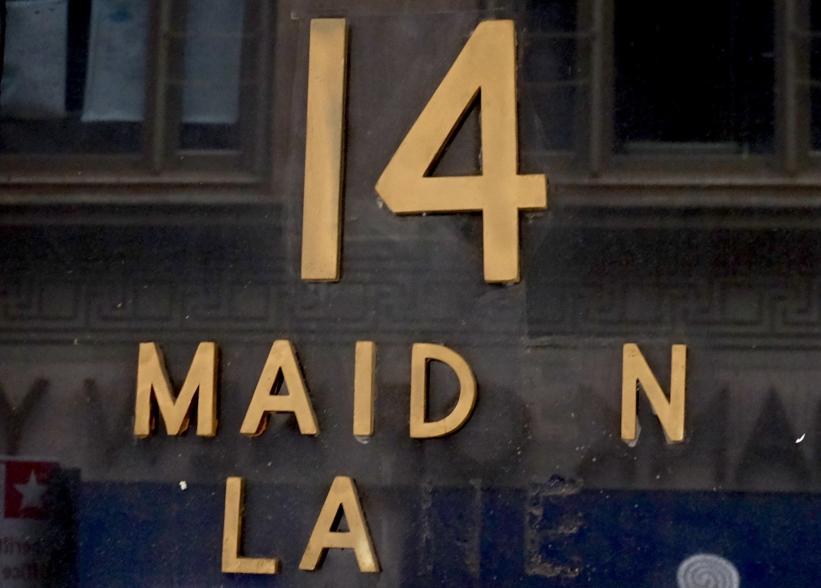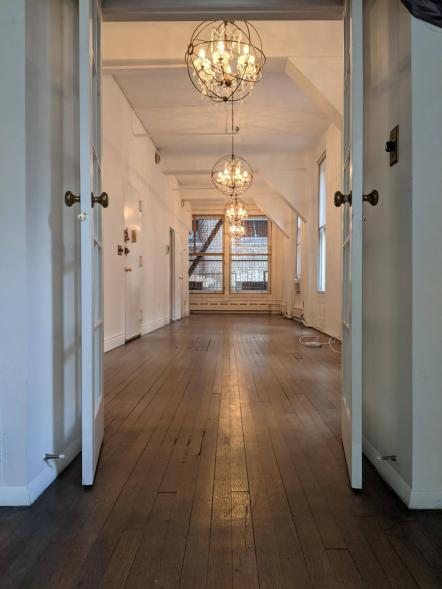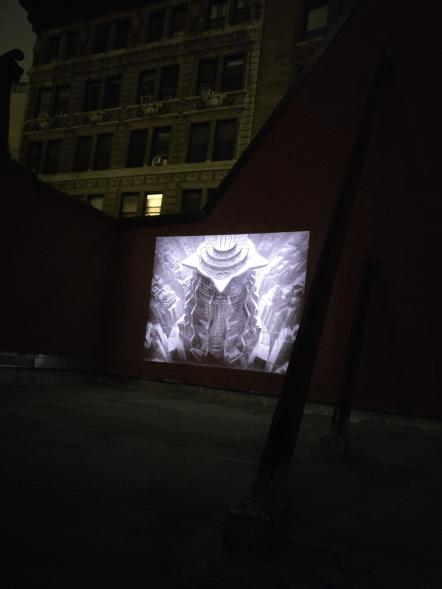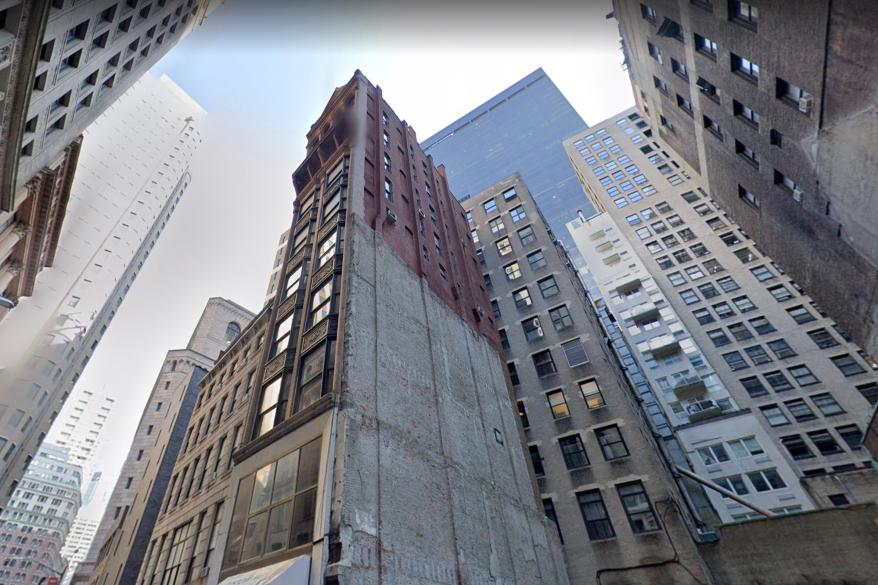Landlord evicts entire building of Manhattan artists
Down a narrow Financial District street one block north of the Federal Reserve — past a cobbler and a secondhand gem seller — an era has quietly come to an end in one of Manhattan’s earliest skyscrapers.
“Everyone in my building had lived there for over a decade,” artist Molly Crabapple told The Post of 14 Maiden Lane, the 128-year-old former Diamond Exchange she’d called home for 12 years before being evicted along with all other building residents last month.
Built for jewelers in 1894, the 10-story, nine-unit loft building discreetly served as a private arts mecca over the past decade — a residential hub of creativity for inhabitants and their huge network of friends and collaborators.
Blessed with enormous lofts, the occupants built a community for themselves and the countless like-minded spirits they invited into their sprawling, light-filled apartments. The tenants lacked the star power or notoriety to earn the building anything close to a Chelsea Hotel or Factory-level reputation, but for those in the know, the address was a diamond in the rough of Manhattan’s tourist and financier-filled southern tip.
“It was a really uniquely magical building. You wouldn’t think that there would be so many artists in the Financial District, but I guess that’s the benefit of being in such a profoundly uncool neighborhood,” said Crabapple, who’d lived in her approximately 1,000-square-foot unit with her partner, the illustrator Fred Harper, since 2010. “We were really tight as a building. I feel really lucky to have had that experience. It was beautiful.”
Life at 14 Maiden Lane was always a trade-off, former residents say: Having an entire, ethereal corner of New York City to themselves for below market rent came at the cost of dealing with a landlord they allege was negligent, refused to fix most issues and periodically showed up in disguise to steal from them. After the building sold in January, for $9.5 million, the new owners allegedly let everyone’s leases run out and served all remaining tenants eviction papers, giving them only the minimum legal warning.
The building’s owners, Diamond Lane LLC, did not return The Post’s request for comment. An attorney for the owners didn’t immediately provide comment on their behalf.
At the very least, former residents have their memories.
During the Occupy Wall Street protests in 2011, the building — which is a block away from Zuccotti Park — became something of an “unofficial press room” for protestors who’d “drink my whiskey, use my outlets, take showers after they got out of jail” Crabapple recalled. Later on, there were parties where “we would have every war journalist and porn star crowded onto the fire escape, smoking cigarettes till dawn.”
“I’ll always miss it,” former resident Crystal Thompson told The Post. “I just think I’m the luckiest person to have been in that building. The rest of it was a horror, but the art was so great.”
A film and TV tailor who does occasional work for the Metropolitan Opera, Thompson and her husband — a “lighting guy for corporate things” — have a side business doing pop-up events and would often throw themed soirées in their third-floor unit.
Those would frequently feature multi-story projections out their window, across the empty lot next door and onto the adjacent building. “You would get all kinds of reflections back into the apartment, and nobody was downtown at that time, and we used to laugh that anyone who was never bothered to look up,” she said.
Once a water pipe broke in the elevator shaft the morning of a party, “so all these people, including a French designer for the Met, they had to go up all these stairs and past this busted pipe” to get to her colorfully lit apartment. “They were like, ‘What is this amazing world?’ ”
Before they lost roof access, the residents had countless photoshoots with the water tower. A German model at one point started a thriving skincare line out of her loft, and the brocade wallpaper in Crabapple’s bathroom became something of a meme, with a fan once creating an entire Tumblr account dedicated to it. During the pandemic, residents sent cocktails up and down the elevator to each other. Through her window, a photographer filmed the second tower coming down on 9-11, and the subsequent cloud of ash that enveloped the neighborhood.
“I don’t think there’s been anything like it. We had art coming from different apartments — this floor that floor — it was about how they combined,” said Thompson of their home’s special dynamic. “We were a bunch of artists in downtown Manhattan, which is kind of no-man’s land, but we had big space and it was super DIY. I don’t think if we lived in another kind of building I could’ve become the artist that I did.”
One resident who was “too stressed” and sad to speak to The Post, had been living in the building since soon after 9/11.
“I think of all of us, it was the worst for him. It was his home for a really long time, and I think he had an extraordinarily good price,” said Kristin Rose, a former small-business owner who lived in the building from 2015 until late 2020.
“It was hard to leave,” she added. “If we could’ve we would’ve stayed there indefinitely.”
Indeed, the eviction was a crushing blow to the remaining residents.
“We had just been through COVID together, we felt like ‘It’s all good, we’re gonna make it,’ and then it ended up being a 90-day thing,” said Thompson. “It’s really not much time when you’ve been somewhere so long.”
“It’s the classic story of a developer buying the building and throwing everyone out. ‘OK, you paid your rent on time for 20 years’ and then in three months you have to pack up your life and go ’cause a speculator thinks he can squeeze more money out of the building,” said Crabapple. “This sort of thing shouldn’t be normal. It’s pure greed and it’s displacing people.”
Rose is concerned that the building, which isn’t landmarked, will soon be demolished. (To date, no demolition permit exists, according to city Department of Buildings records.)
“It was an extraordinary place, and it’s sad that it’s being lost to whatever,” she said. “It’s legitimately a great loss to the city, cause it’s an interesting part of early American architecture.”
“I think this is just the story of NYC. People are constantly trying desperately to hold onto a little space here, but this is a city run by real estate,” said Crabapple. “Just to have some space is the greatest luxury in New York.”
Read the full article Here



